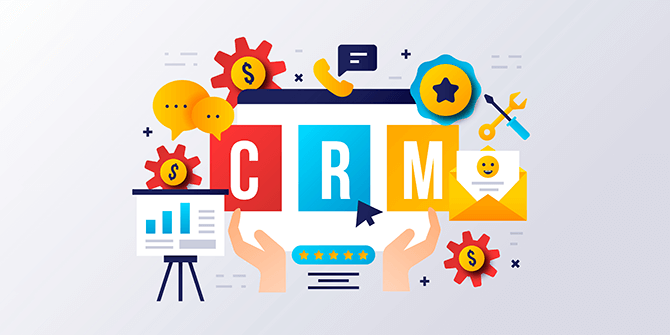Key Takeaways
- CRM data management software is a valuable tool for handling and organizing client information, service details, and performance metrics.
- It involves data collection, organization, quality maintenance, analysis, security, integration with other systems, and more.
- Data import involves transferring data into the CRM system, including contact information, interaction history, sales figures, and more.
- Data export extracts CRM data for use in other applications or systems, streamlining analysis and reporting.
Managing data has become a critical element of success for businesses worldwide in the modern age, where information means power.
As they grow, so does the sheer amount of data they generate and process. Client information, service details, and performance metrics can become overwhelming to handle manually.
CRM data management software for consulting businesses is one of the most effective tools that can help.
It can help with consolidating and organizing information and streamline data import and export.
- What is CRM data management?
- CRM data management best practices for consulting businesses
- Understanding data import in CRM
- Streamlining data export from CRM
- Integration and synchronization of CRM with external systems
- Data security and privacy in CRM data management
- Simplifying data management in CRM systems for consulting businesses
What is CRM data management?
CRM Data Management is the comprehensive process of handling, organizing, and analyzing customer data within a Customer Relationship Management (CRM) system.
Given the central role of CRM systems in modern businesses, efficient data management within these systems becomes crucial for a myriad of reasons.
Data Collection
At its core, CRM data management starts with the collection of pertinent data. This includes capturing information about prospects, leads, and customers from various touch points – be it websites, social media, emails, or direct interactions.
Data organization
Once collected, the data is structured and categorized for easy retrieval. Organizing data can involve segmenting customer details based on demographics, purchase history, interaction frequency, etc. Proper organization ensures that businesses can quickly access relevant data when needed.
Data quality maintenance
CRM data management isn’t just a one-time task. It requires regular upkeep to ensure the quality of the data. This involves cleaning the system of any outdated or redundant data, merging duplicates, and updating any inaccuracies.
Data analysis
With clean and structured data, businesses can derive actionable insights. Analyzing the customer data can reveal patterns, such as which marketing strategies are most effective or identify opportunities for upselling and cross-selling.
Data security
Given the sensitive nature of customer data, CRM data management also encompasses the protection of this data. This involves implementing robust security measures, ensuring compliance with data protection regulations, and regularly monitoring for potential breaches.
Data integration
Modern businesses use a variety of tools and platforms. Effective CRM data management ensures that customer data can seamlessly integrate with other business systems, like marketing automation tools, billing systems, or e-commerce platforms.
In essence, CRM Data Management is about more than just storing customer information. It’s about transforming that information into a valuable asset, facilitating better customer relationships, more informed business decisions, and, ultimately, driving business growth.
CRM data management best practices for consulting businesses
For consulting businesses, CRM data isn’t just about contact details. It’s a goldmine of insights, past interactions, project histories, and potential business opportunities.
Leveraging this data effectively can result in enhanced client satisfaction, better decision-making, and streamlined operations. Here are the top best practices for CRM data management tailored for consulting businesses:
Segmentation
Segment your clients based on various criteria like industry, size, or project type. This enables targeted communications, better service delivery, and personalized client interactions.
Unified data view
Ensure that your CRM offers a 360-degree view of each client. This means integrating project management details, communication logs, billing history, and other relevant data points in a single view.
Regular data audits
Implement a routine check to identify outdated information, inconsistencies, or missing data. This helps maintain the integrity and reliability of the CRM data.
Implement access hierarchies
Consulting businesses often have multiple projects running concurrently with different teams. Implement a role-based access system to ensure team members access only relevant data, thereby maintaining client confidentiality.
Opt for cloud-based solutions
A cloud-based CRM solution offers mobility, scalability, and real-time collaboration, vital for consulting businesses that often operate across different locations and time zones.
Integrate with external tools
From task management tools like Asana or Trello to communication platforms like Slack or Teams, ensure your CRM seamlessly integrates with other tools your consulting business relies on.
Data security protocols
Adopt stringent security measures, like end-to-end encryption and two-factor authentication, especially if your consulting business deals with sensitive information.
Feedback loop integration
After project completion, integrate feedback mechanisms within your CRM. This not only gauges client satisfaction but also provides invaluable insights for future engagements. You can also use a CRM to send questionnaires to clients, which helps your business better understand client needs.
Stay updated with regulatory changes
If your consulting business operates across borders, ensure you’re aware of and compliant with data protection regulations pertinent to each region.
Leverage data analytics
Use the analytical capabilities of your CRM to derive actionable insights. Understand patterns, identify potential growth areas, foresee challenges, and strategize accordingly.
Regular training sessions
The best CRM is only as good as its users. Ensure your team is well-versed with all CRM functionalities and understands the importance of meticulous data entry and management.
Understanding data import in CRM
If you need to become more familiar with data import in CRM, it’s the process of transferring data into the Customer Relationship Management system or software. This might involve information gathered in spreadsheets, databases, or other CRM systems.
These systems, such as Monday Sales CRM, Salesflare CRM, and Close CRM, are designed to handle diverse data types. It includes contact information, client interaction history, sales figures, marketing campaign data, service records, and operational metrics.
Best practices for data import in CRM systems
Using CRM systems and successfully importing data is more than just uploading the files. It is an intricate process that requires careful planning and execution. Here are the best practices:
- Before importing data, ensure it undergoes a thorough data cleansing process. This involves eliminating duplicates, correcting inaccuracies, and data validation integrity.
- Prior to import, map the data fields correctly to their corresponding fields in the CRM. It will ensure that all data aligns with the structure, reducing the risk of corruption or loss.
- The final step is testing data to verify the success of the import. It can include spot-checking records, running reports, or using data verification tools.
By understanding all these intricacies, a consulting business can harness the full potential of its structured data.
Streamlining data export from CRM
Data export in CRM involves extracting data from the CRM system for use in other applications or systems. The main purpose of this process is to streamline the data analysis, reporting, and sharing outside the CRM environment.
A wide range of data, from customer details to sales metrics, can be export data. CRM systems offer various data export formats like CSV, Excel, PDF, and more and provide customization options to tailor the exported data whenever a user needs it.
Best practices for data export in CRM systems
Like data import, the export process also requires careful planning and execution to ensure data integrity and usability. To streamline the data export process, you should do the following:
- Before you initiate the process, it’s crucial to clearly define the data you need. Unnecessary data can complicate the export process and make analysis more difficult. This step minimizes the volume of processed information.
- CRM systems generally support a variety of export formats, such as CSV, PDF, and an Excel migration tool among others. Understanding the requirements of the receiving system will enable you to choose the most suitable format.
- Many routine data export tasks can be automated, such as export from Airtable to Google Sheets, saving time and reducing the risk of human error. For instance, if you need to export a certain set of data on a weekly basis, setting up an automated process can ensure it gets done seamlessly; automation tools like Coupler.io can be a great help with that.
These practices not only streamline the process of export but also ensure that the available CRM data is easily accessible for a wide array of operations.
Integration and synchronization of CRM with external systems
It’s crucial for a CRM system to work in harmony with other business tools. This allows data to flow smoothly between systems, providing a complete picture of the business operations.
In consulting businesses, these systems are often connected to external systems like project management tools, invoicing software, or marketing platforms.
While such integration can boost productivity and enhance customer service, it may also present challenges, such as ensuring data security.
However, data synchronization between CRM and other systems guarantees up-to-date and accurate information across all platforms.
To achieve a smooth integration and synchronization process, it’s beneficial to properly align the data fields across systems. You should also regularly check the systems for issues and automate data sync tasks when possible.
The critical role of data mapping
In the context of system integration, data mapping is, again, a crucial step. When a CRM system is integrated with another business tool, like a marketing automation platform or a billing system, data fields in both systems must correspond correctly.
This enables seamless data flow between the systems and ensures data consistency across the business operations. Effective data mapping significantly contributes to accurate, consistent, and reliable data in CRM systems.
In turn, it enhances data-driven decision-making in consulting businesses.
Data security and privacy in CRM data management
One thing that is paramount for CRM systems is data privacy and security. With the vast amount of sensitive information they handle, CRM systems must be fully compliant with data protection regulations.
It’s equally essential to ensure data is safeguarded during import and export processes to prevent breaches. Strategies to secure data can include encryption, anonymization, and using secure connections for data transfer.
Additionally, maintaining data confidentiality and controlling who can access the data is crucial within these systems.
A business should assign different user roles and permissions to ensure that only authorized personnel can access certain data and keep it safe and private.
Simplifying data management in CRM systems for consulting businesses
As businesses are becoming more and more focused on using data, it’s becoming really important to manage data import and export in CRM systems well, especially for consulting firms.
By following the best practices, businesses can better manage their data, improve their customer service, make smarter decisions, and in the end, perform better as a business.
Even though managing data in CRM systems can be complicated, with careful planning and effort, it can certainly lead to great results.
Keep in mind that the key to managing data with ease in CRM systems lies in these best practices applied at every stage. From cleansing and validating data before import, through proper data mapping, to automation of processes for efficiency, each step matters in streamlining data management.




